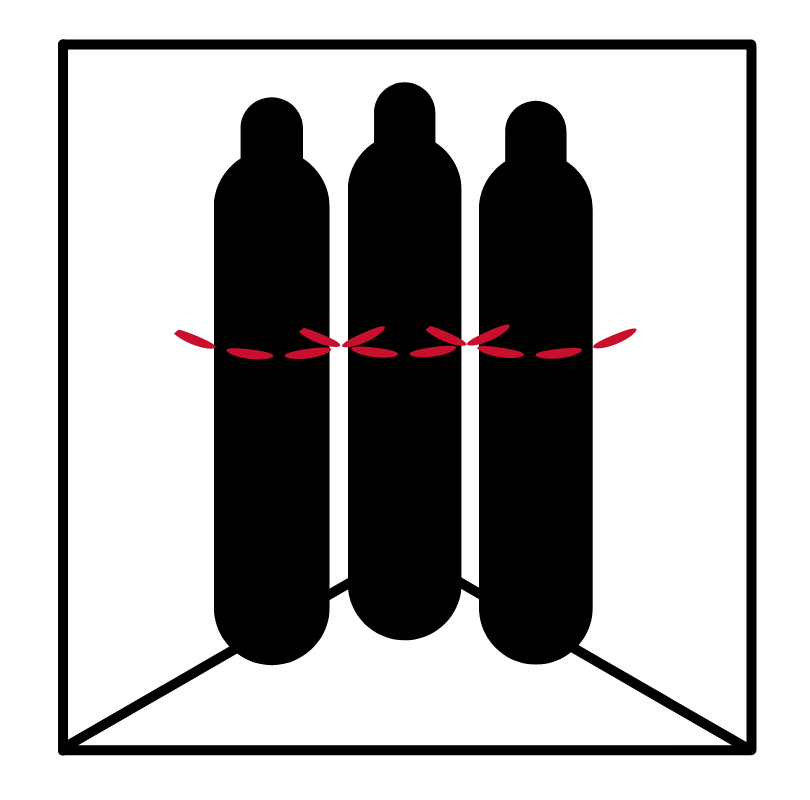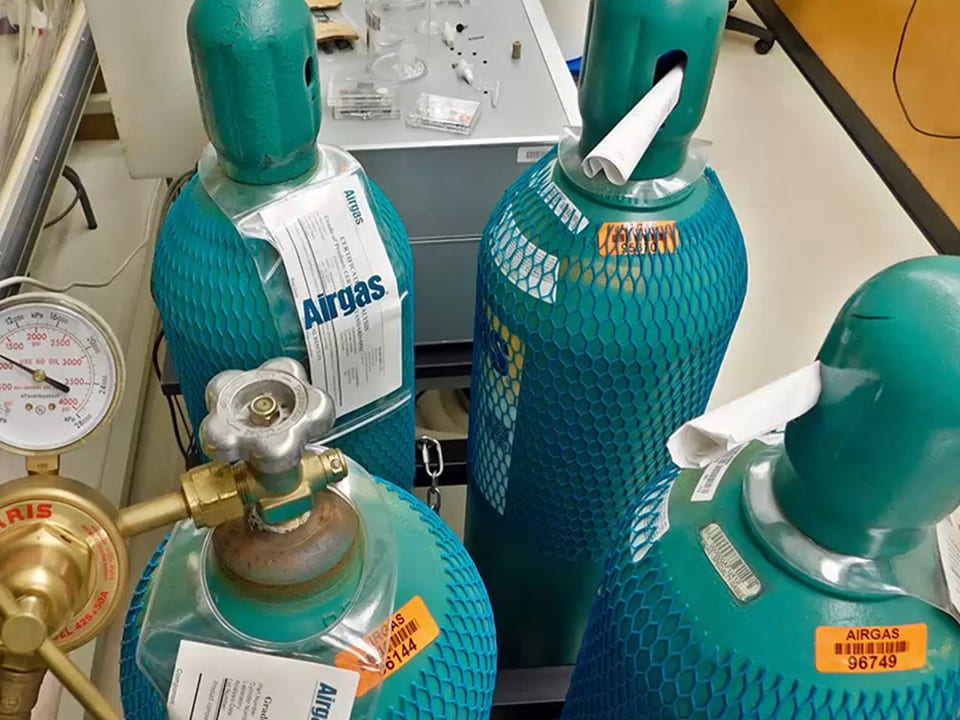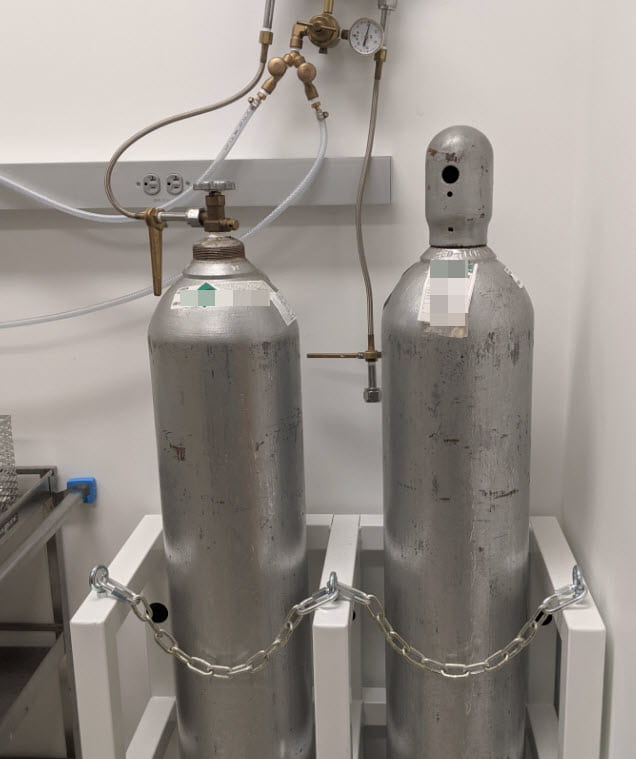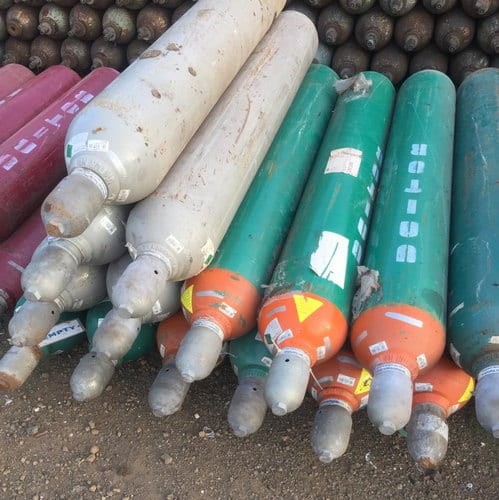Management of Unwanted Gas Cylinders

Key Takeaways
- Check pressure of cylinders before disposal
- Cylinders containing hazardous waste must be labeled and disposed of properly
- Purchase cylinders from companies that accept returns
Requirements and Cost Considerations
Researchers and authorized users are required to properly manage gas cylinders, or to purchase cylinders from companies that accept them for return. While many larger cylinders purchased from approved vendors are well managed, certain specialty gasses or blends may be challenging to return.
- Disposal costs for lecture bottles that cannot be returned can cost from $100 per cylinder for inert gases to over $1,000 for unusual or highly toxic gases.
- The cost of managing these cylinders is among the costs of performing your research.
Please notes that OARS and ECOS does NOT routinely collect or manage compressed gas cylinders, including lecture bottles, for hazardous waste disposal.



